| |
|
|
|
Delta
Pavonis Planets
|
| |
|
|
|
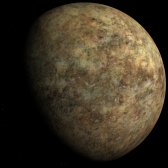 |
Cacus (Delta Pavonis B)
Cacus is the closest planet to Delta Pavonis. The planet
lacks an atmosphere and has a hot surface composed mostly of
iron sulfide. Volcanic activity has carved a large system
of caves under the planet's surface.
|
Distance:
0.68 AU
Orbit:
207 Days
Radius:
4751 km
Gravity: 0.69 g
Rotation: 53 Hours
|
| |
|
|
|
| |
|
|
|
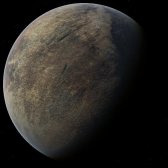 |
Nemesis (Delta Pavonis C)
Nemeis is the second closest planet orbiting Delta Pavonis.
Greenhouse gases from the carbon dioxide atmosphere heat up the
planet's surface to scorching temperatures.
Extremely dry and dusty, wind storms are common on the planet.
|
Distance:
0.87 AU
Orbit:
316 Days
Radius:
5765 km
Gravity: 0.87 g
Rotation: 35 Hours
|
| |
|
|
|
| |
|
|
|
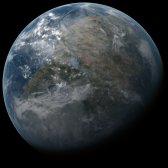 |
Novaterra (Delta Pavonis D)
The primary planet is an earth-like world. Novaterra was
the first large scale colonization project after mankind
rediscovered interstellar travel. The planet is nearly
identical to earth in size, composition, atmosphere, and
gravity, the planet is sometimes called an earth-twin.
Delta Pavonis shift into a sub-giant has stressed the planet's
ecosystem, sending the planet into a temporary cooling down
period.
|
 |
Distance:
1.21 AU
Orbit:
491 Days
Radius:
6298 km
Gravity: 1 g
Rotation: 25 Hours
|
| |
|
|
|
| |
|
|
|
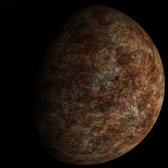 |
Virtus (Delta Pavonis E)
Virtus is a cold dry world that with a thin carbon
dioxide/methane atmosphere. The surface is composed of
basalt with low lying volcanic plains criss-crossed by highland
areas.
|
Distance:
1.68 AU
Orbit:
795 Days
Radius:
5156 km
Gravity: 0.60 g
Rotation: 30 Hours
|
| |
|
|
|
| |
|
|
|
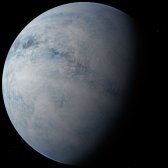 |
Aquilo (Delta Pavonis F)
Aquilo is the fifth planet in the Delta Pavonis system.
The planet is composed mostly of silicate rock and water ice.
The planet's surface is too cold for liquid water to exist,
making the planet frozen ice world. The atmosphere
is composed of mostly carbon dioxide and nitrogen, with small
traces of oxygen.
|
Distance:
2.37 AU
Orbit:
1337 Days
Radius:
6981 km
Gravity: 1.04 g
Rotation: 29 Hours
|
| |
|
|
|
| |
|
|
|
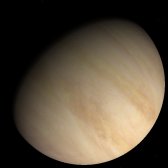 |
Orcus (Delta Pavonis G)
Orcus is the sixth planet in the Delta Pavonis system. A
common hydrogen-helium gas giant. The atmosphere also has
traces of methane and ethane in clouds that band around planet.
|
Distance:
7.53 AU
Orbit:
21 Years
Radius:
66690 km
Gravity: 2.5 g
Rotation: 14 Hours
|
| |
|
|
|
| |
|
|
|
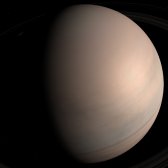 |
Juno (Delta Pavonis H)
Juno is the system's largest planet, a gas giant with a thin set
of rings. The planets atmosphere is composed mostly of
hydrogen and helium with traces of methane a ammonia.
|
Distance:
16.66 AU
Orbit:
68 Years
Radius:
72860 km
Gravity: 3.6 g
Rotation: 17 Hours
|
| |
|
|
|

